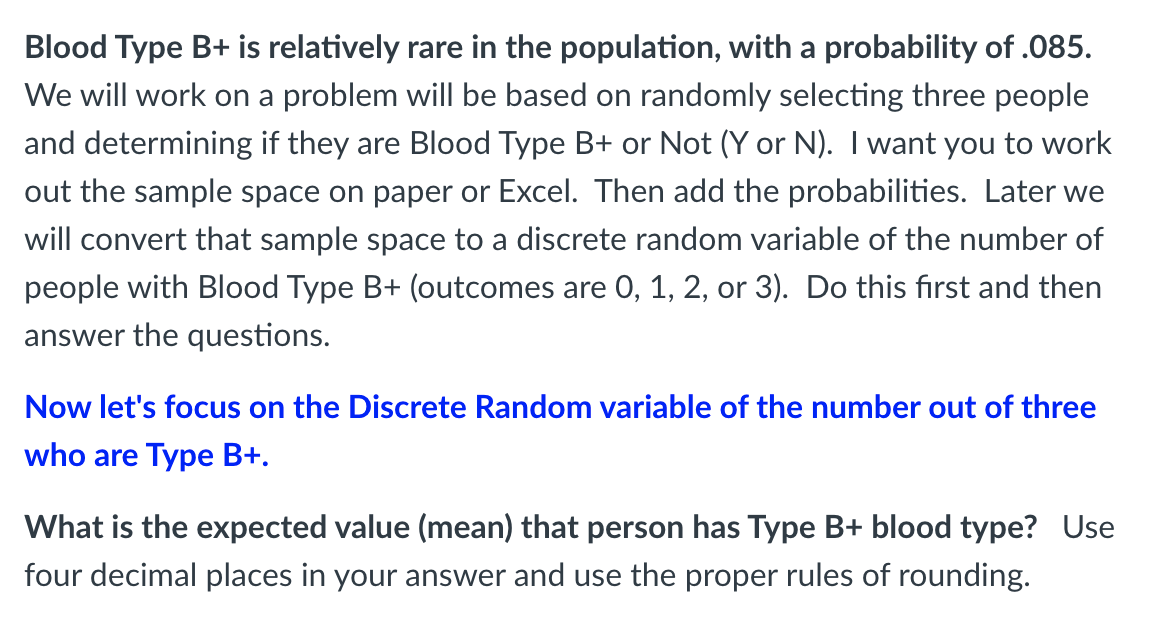Blood Type B+ is relatively rare in the population, with a probability of .085. We will work on a problem will be based on randomly selecting three people and determining if they are Blood Type B+ or Not (Y or N). I want you to work out the sample space on paper or Excel. Then add the probabilities. Later we will convert that sample space to a discrete random variable of the number of people with Blood Type B+ (outcomes are 0, 1, 2, or 3). Do this first and then answer the questions. Now let's focus on the Discrete Random variable of the number out of three who are Type B+. What is the expected value (mean) that person has Type B+ blood type? Use four decimal places in your answer and use the proper rules of rounding.
What is the expected value (

Trending now
This is a popular solution!
Step by step
Solved in 2 steps

Blood Type B+ is relatively rare in the population, with a probability of .085. We will work on a problem will be based on randomly selecting three people and determining if they are Blood Type B+ or Not (Y or N). I want you to work out the sample space on paper or Excel. Then add the probabilities. Later we will convert that sample space to a discrete random variable of the number of people with Blood Type B+ (outcomes are 0, 1, 2, or 3). Do this first and then answer the questions.
Now let's focus on the Discrete Random variable of the number out of three who are Type B+.
What is theVariance that a person has Type B+ blood type? Use four decimal places in your answer and use the proper rules of rounding.



